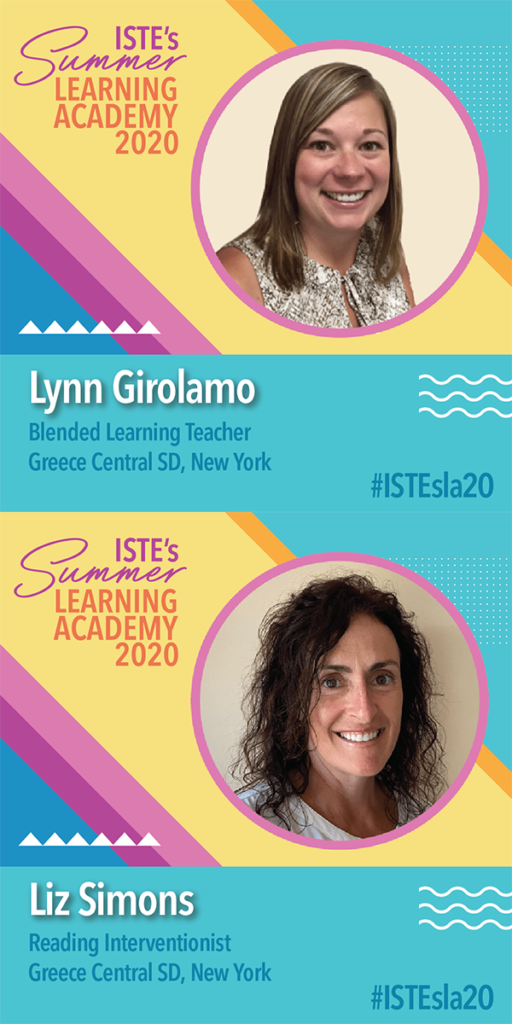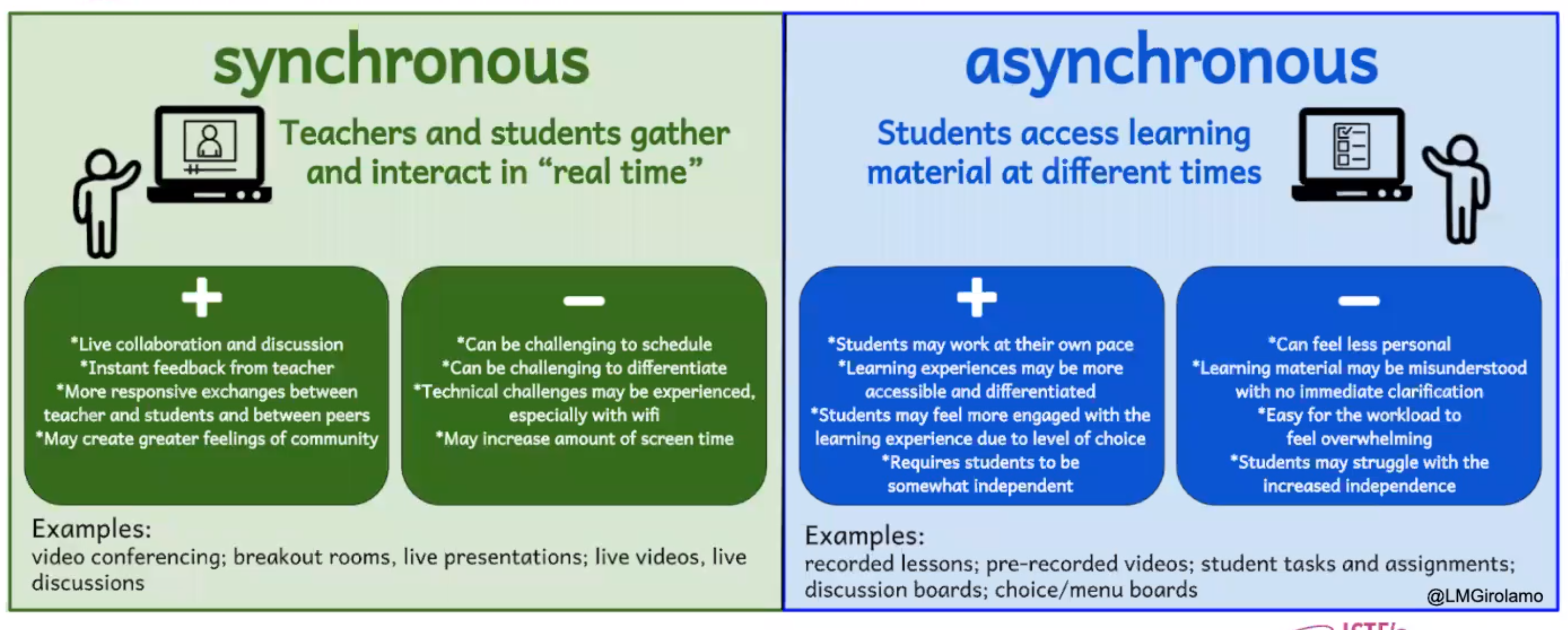Lessons Learned with Remote Teaching – #ISTEsle20 Wk 2 Day 4
The following post has been completed as part of my personal reflection as I work through the ISTE Summer Learning Academy #ISTEsla20 Any images,tables, or direct quotes (as indicated with the appropriate formatting) are provided from the specific course or webinar and can be credited to: ISTE Summer Learning Academy. (2020). https://summerlearningacademy.iste.org/

Week 2 – Day 4 focuses on “Online Learning that Empowers All Students”. It is facilitated by Lynn Girolamo and Liz Simons and described as:
“Using key feedback from our learners, we know that students will learn online when they feel they have a purpose, a voice, some choice and feedback. Though online learning can feel “humanless,” there are ways to build relationships and increase social-emotional learning (SEL) in a digital format. Find out how to design online learning for all students so they are empowered to succeed.“
Main Takeaways
- Understand feedback from students, families, and educators from the experiences during March-June 2020
- This time was emergency remote teaching/learning which is not the same as online learning
- Synthesize the lessons we should learn from that feedback
- Resilient Teaching: intentionally integrating methods of teaching that easily adapt to rapidly changing contexts, to be capable of leveraging technololy to move fluidly between environments.
- Focus on social emotional learning first
- Focus on high-quality lesson design and delivery
- Provide consistent authentic feedback
- Plan for strategies to implement moving forward
- Compliance -> Engagement -> Empowerment
- Maslow before Bloom
- Empower students with voice and choice
- Make thinking visible through screencasting
- Choice boards, learning menus
- Have interactive slides
- Create more and consume less: Project Based learning, Genius Hour

- Use a LMS, learning management system, to have a “one stop shop”
- Include interactive lessons so students aren’t just consuming
- Don’t assume students know how to use a tool. Teach how to use a tool prior to requiring it for content
- Meet the needs of all learners and ensure accessibility
- High quality feedback is:
- specific
- timely
- goal oriented
- personal/authentic
- involves the learner
Questions
- How might we help students feel safe?
- How might we help students feel that they belong?
General PD Thoughts
- If using tools outside of your main LMS to gain feedback or build conversations during a presentation (like social media, back channels, etc) it is helpful to include the account handle, hashtag, link, or participation code in the footer of each slide.
- A disclosure was included at the start sharing that any shared resources would be fully summarized and sent out at the end of the PD; this provided an opportunity to sit-back and take in the information without rushing to catch specifics and worry about missing the URL.
- Pauses were specifically built-in for participants to take notes/reflect and for presenters to visit the chat and answer questions
- Today’s webinar shared the following ed tech tools: ThoughtExchange, Nearpod, Padlet, Flipgrid, SeeSaw, Pear Deck, EdPuzzle, Wizer.me, Nearpod
- Thank you to Lynn and Liz for sharing!
Read all of the #ISTEsla20 posts:
- Microcourses
- Week 3
- Week 2
- Week 1